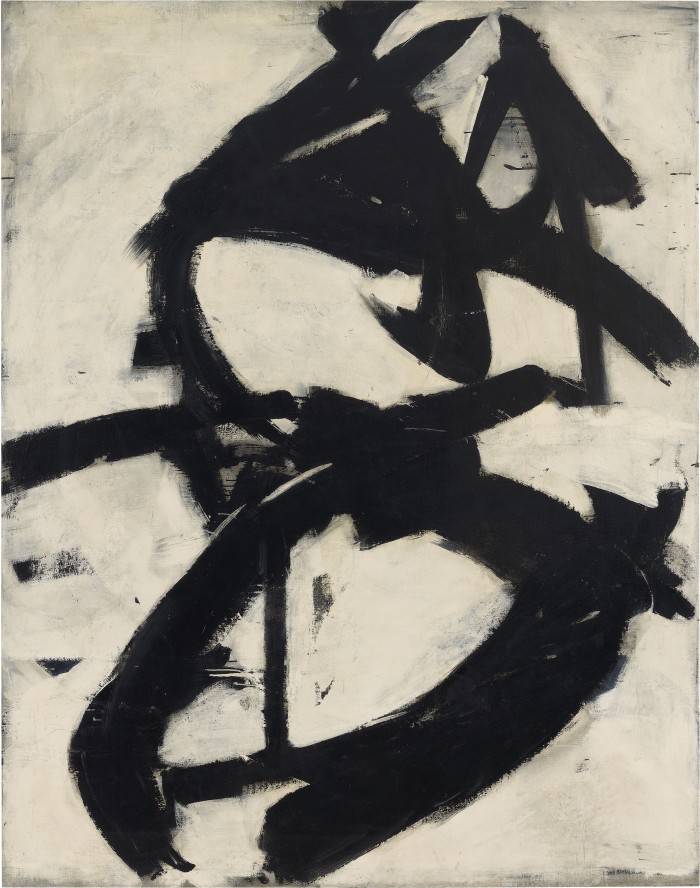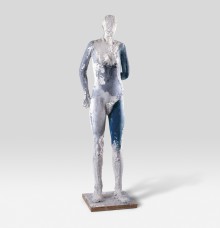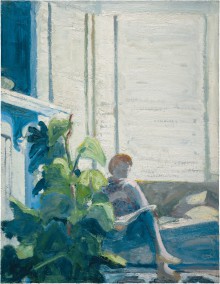Franz Kline
Figure 8 1952

© 2014 The Franz Kline Estate / Artists Rights Society (ARS), New York. Reproduction, including downloading of ARS member works is prohibited by copyright laws and international conventions without the express written permission of Artists Rights Society (ARS), New York.
Kline’s arresting composition features vigorous black and white brushstrokes that capture the energy of the physical act of painting. The striking slashes of black coalesce into a calligraphic figure eight, while the white strokes, equally expressive, refuse to recede to the background. Despite the apparent spontaneity of the artist’s sweeping gestures, Kline made several small studies in preparation for this work.
Prior to the Andersons acquiring Figure 8, the work was in the personal collection of William Rubin, who was then Chief Curator of Painting and Sculpture at the Museum of Modern Art in New York.
-Sidney Simon, PhD ‘18
Friendships in the New York School
Is the figure still or in motion? What is it a figure of? This is the illusion of Kline’s action painting style that he developed after moving to New York in 1939. This style was heavily influenced by his newfound friendship with Willem de Kooning, whose works are exhibited in this collection as well. De Kooning encouraged Kline to create a visual language of his own, introducing him to Jackson Pollock and Philip Guston, also New York School artists with works in the collection.
The large strokes of black paint are dominant yet mask the indecisiveness of Kline revealed under the washes of white paint in the background. It’s as if he painted the figure over and over again. Kline developed this style while sitting in coffee shops in New York, talking with de Kooning about his artistic endeavors and observing those happening around him. With the influence of his wife’s admiration for famously schizophrenic ballet dancer Vaslav Nijinsky, Kline’s inspiration for this work came from scribbling on napkins over and over with forceful pencil marks, creating a great illusion of motion in stillness.
—Irmak Ersoz ‘24







![Collage and Ink Figure Study No. 35 [Joan Brown], 1963](https://anderson.stanford.edu/wp-content/uploads/2017/07/MN.1963.DWG_.093rev-220x218.jpg)